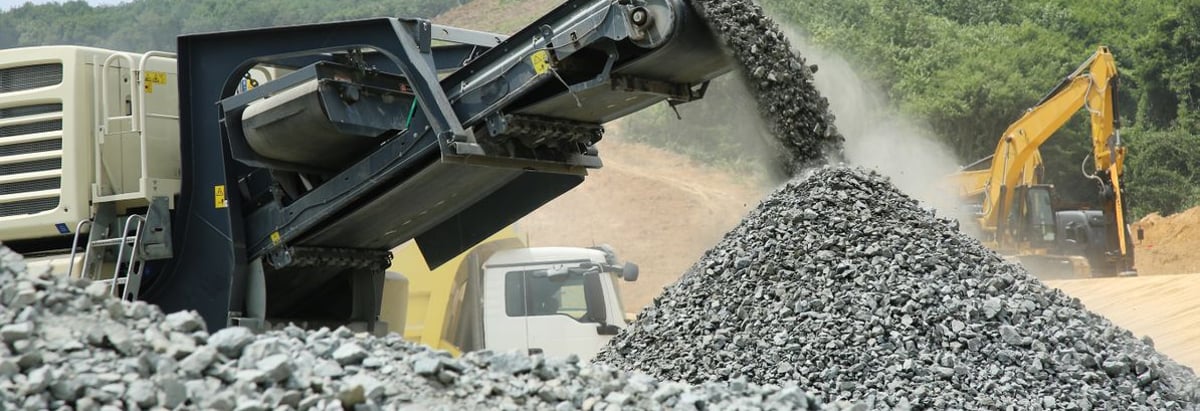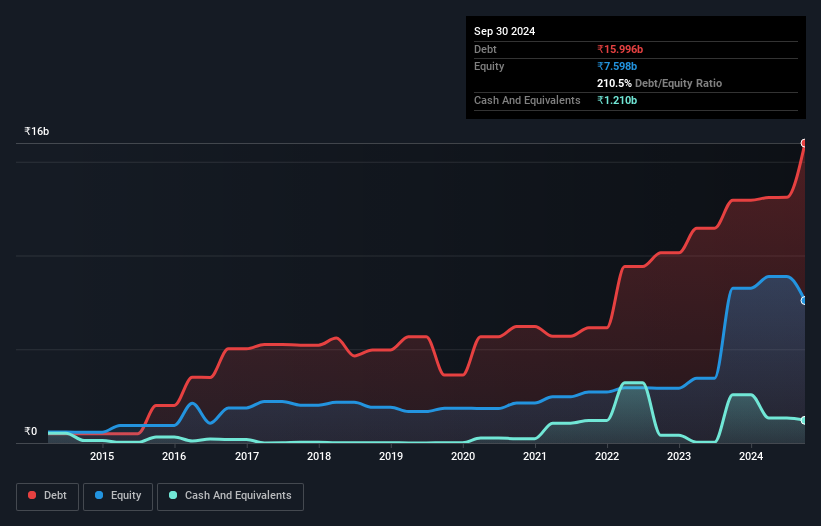- India
- /
- Basic Materials
- /
- NSEI:UDAICEMENT
Does Udaipur Cement Works (NSE:UDAICEMENT) Have A Healthy Balance Sheet?

Howard Marks put it nicely when he said that, rather than worrying about share price volatility, 'The possibility of permanent loss is the risk I worry about... and every practical investor I know worries about.' It's only natural to consider a company's balance sheet when you examine how risky it is, since debt is often involved when a business collapses. Importantly, Udaipur Cement Works Limited (NSE:UDAICEMENT) does carry debt. But the real question is whether this debt is making the company risky.
When Is Debt A Problem?
Generally speaking, debt only becomes a real problem when a company can't easily pay it off, either by raising capital or with its own cash flow. In the worst case scenario, a company can go bankrupt if it cannot pay its creditors. However, a more common (but still painful) scenario is that it has to raise new equity capital at a low price, thus permanently diluting shareholders. By replacing dilution, though, debt can be an extremely good tool for businesses that need capital to invest in growth at high rates of return. The first thing to do when considering how much debt a business uses is to look at its cash and debt together.
View our latest analysis for Udaipur Cement Works
How Much Debt Does Udaipur Cement Works Carry?
You can click the graphic below for the historical numbers, but it shows that as of September 2024 Udaipur Cement Works had ₹16.0b of debt, an increase on ₹12.9b, over one year. On the flip side, it has ₹1.21b in cash leading to net debt of about ₹14.8b.

How Strong Is Udaipur Cement Works' Balance Sheet?
The latest balance sheet data shows that Udaipur Cement Works had liabilities of ₹3.69b due within a year, and liabilities of ₹14.8b falling due after that. Offsetting these obligations, it had cash of ₹1.21b as well as receivables valued at ₹831.4m due within 12 months. So it has liabilities totalling ₹16.4b more than its cash and near-term receivables, combined.
This deficit is considerable relative to its market capitalization of ₹17.7b, so it does suggest shareholders should keep an eye on Udaipur Cement Works' use of debt. Should its lenders demand that it shore up the balance sheet, shareholders would likely face severe dilution.
We use two main ratios to inform us about debt levels relative to earnings. The first is net debt divided by earnings before interest, tax, depreciation, and amortization (EBITDA), while the second is how many times its earnings before interest and tax (EBIT) covers its interest expense (or its interest cover, for short). Thus we consider debt relative to earnings both with and without depreciation and amortization expenses.
Udaipur Cement Works shareholders face the double whammy of a high net debt to EBITDA ratio (7.9), and fairly weak interest coverage, since EBIT is just 1.1 times the interest expense. The debt burden here is substantial. Fortunately, Udaipur Cement Works grew its EBIT by 3.9% in the last year, slowly shrinking its debt relative to earnings. When analysing debt levels, the balance sheet is the obvious place to start. But you can't view debt in total isolation; since Udaipur Cement Works will need earnings to service that debt. So when considering debt, it's definitely worth looking at the earnings trend. Click here for an interactive snapshot.
Finally, a business needs free cash flow to pay off debt; accounting profits just don't cut it. So we always check how much of that EBIT is translated into free cash flow. During the last three years, Udaipur Cement Works burned a lot of cash. While investors are no doubt expecting a reversal of that situation in due course, it clearly does mean its use of debt is more risky.
Our View
To be frank both Udaipur Cement Works's interest cover and its track record of converting EBIT to free cash flow make us rather uncomfortable with its debt levels. Having said that, its ability to grow its EBIT isn't such a worry. We're quite clear that we consider Udaipur Cement Works to be really rather risky, as a result of its balance sheet health. So we're almost as wary of this stock as a hungry kitten is about falling into its owner's fish pond: once bitten, twice shy, as they say. The balance sheet is clearly the area to focus on when you are analysing debt. However, not all investment risk resides within the balance sheet - far from it. We've identified 3 warning signs with Udaipur Cement Works (at least 1 which can't be ignored) , and understanding them should be part of your investment process.
If you're interested in investing in businesses that can grow profits without the burden of debt, then check out this free list of growing businesses that have net cash on the balance sheet.
New: AI Stock Screener & Alerts
Our new AI Stock Screener scans the market every day to uncover opportunities.
• Dividend Powerhouses (3%+ Yield)
• Undervalued Small Caps with Insider Buying
• High growth Tech and AI Companies
Or build your own from over 50 metrics.
Have feedback on this article? Concerned about the content? Get in touch with us directly. Alternatively, email editorial-team (at) simplywallst.com.
This article by Simply Wall St is general in nature. We provide commentary based on historical data and analyst forecasts only using an unbiased methodology and our articles are not intended to be financial advice. It does not constitute a recommendation to buy or sell any stock, and does not take account of your objectives, or your financial situation. We aim to bring you long-term focused analysis driven by fundamental data. Note that our analysis may not factor in the latest price-sensitive company announcements or qualitative material. Simply Wall St has no position in any stocks mentioned.
About NSEI:UDAICEMENT
Udaipur Cement Works
Manufactures and supplies cement and cementitious products in India.
Slightly overvalued with worrying balance sheet.
Similar Companies
Market Insights
Community Narratives



